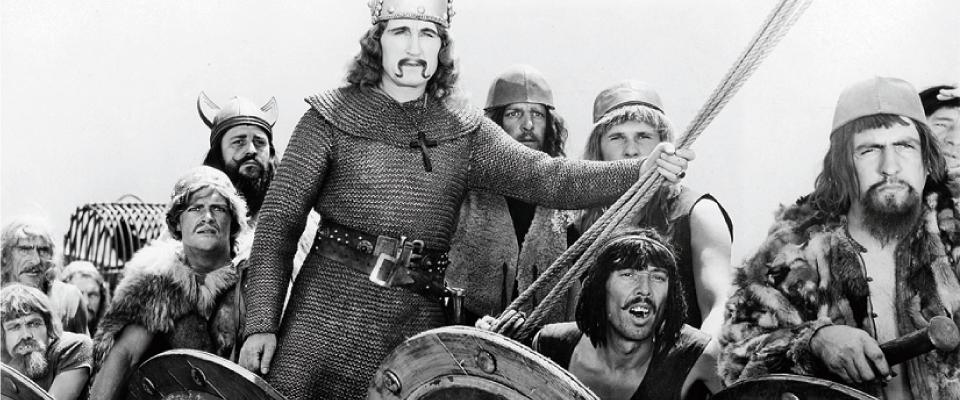The name “Vikings” conjures a romantic image: massive, oared longships astride the sea, crewed by bloodthirsty, bearded Norwegians in horned helmets, intent on rape and rapine. But in addition to being fierce warriors, it turns out that Vikings were navigational experts with great technological prowess. Their ships were fast, able to endure ocean crossings as well as maneuver in shallow water. However, scientists and historians have long been unsure of just how Vikings were able to voyage from Norway to the Americas in such northern latitudes under overcast skies.
Berkeley Professor of Earth and Planetary Science Jim Bishop and undergraduate research assistant Heidi Hansen ’14 (participating via the Undergraduate Research Apprenticeship Program) are working to re-create a device Vikings might have used. The answer lies in a crystallized form of calcium carbonate, called calcite (specifically the Icelandic spar variety). Calcite is known for having a very strong “birefringence,” an optical property that causes double refraction, meaning a light ray is split into two rays that go in different directions. Essentially, it makes the viewer see double.

The Vikings may have used this to their advantage. The idea is that sunlight is polarized the same, whether it’s clear or overcast, so they could measure its polarization using calcite and thus find the sun’s direction.
Bishop started the project after seeing a presentation by Professor John Lindow of the Scandinavian department in the interdisciplinary class Oceans. Bishop works with calcite crystal in his own research. Several varieties of marine organisms make shells out of calcium carbonate and he’s been working on using calcite’s properties to detect them. “This sounded like another dimension to all the cool things that calcite crystals could be used for,” said Bishop.
The device is based on a 2011 study by the Royal Society. A crystal like the one they described was found in an Elizabethan ship discovered off of the Channel Islands by a fisherman in the 1970s. It sank 200 years prior to the identification of light polarization, which could support the Royal Society’s claims that the Vikings used a similar tool also without that science established. Norse mythology also tells of a “sunstone” used by navigators, particularly one hero named Sigurd who used the stone to set his vessel’s course during unfavorable weather.

As light from the sun goes through the atmosphere it is scattered and becomes polarized, or restricted to a particular direction. The light is polarized the same regardless of overcast conditions. Hansen’s device consists of a rotating plate with a hole where focused light can come in and travel through the calcite crystal, and a mirror below that reflects the light. A dark space is created so the viewer is looking only at the reflected light. Vikings may have held the crystal straight up, looked through it, and rotated the calcite as light passed through it. Rotating the crystal changes the way the light hits it and thus the refraction angle. The calcite’s birefringence causes one ray to go through normally and another to pass at an angle. The light’s direction changes as it goes through calcite, and this change tells where the light is coming from—in this case, the sun. There is a nerve in the back of your eye that can recognize this change and causes an optical illusion, “Haidinger’s Brush,” which looks like a fuzzy yellow bowtie. The sun is perpendicular to the yellow shape.
“It’s more of an optics project than anything,” Hansen said. “I think it’s plausible and I think it’s a reasonable hypothesis.” However, the limiting factor is how sensitively the Vikings could have identified that change in polarization. Hansen says there hasn’t been a lot of optical research on the phenomenon. In addition, Vikings would have needed a thorough knowledge of solar elevation as a function of latitude.
Though the device will not be used on a re-creation of a Viking ship, it will be used for demonstration in the EPS class Oceans, which will be taught as a Letters and Science “Big Ideas” course. “I think it’s really appropriate for the Oceans class because it’s sort of an interdisciplinary class in the first place, so it’s the ideal kind of project,” Hansen said.
The Royal Society study posits that such calcite crystals may even be useful today, in places where compasses are rendered ineffective. When asked about his opinion on this, Bishop laughed, “I’d rather have my GPS!”





















